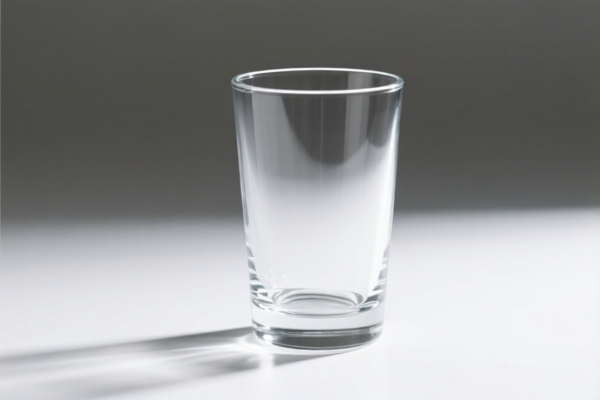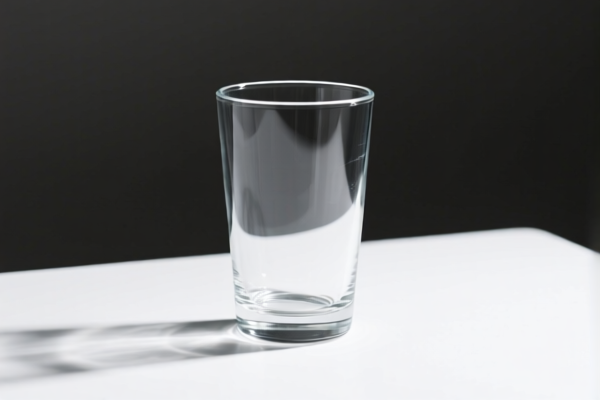| HS Code | Official Doc | Tariff Rate | Origin | Destination | Effective Date |
|---|---|---|---|---|---|
| 7013221000 | Doc | 52.5% | CN | US | 2025-05-12 |
| 7013281000 | Doc | 66.0% | CN | US | 2025-05-12 |
| 7010905005 | Doc | 55.0% | CN | US | 2025-05-12 |
| 7010905055 | Doc | 55.0% | CN | US | 2025-05-12 |
| 3924101000 | Doc | 33.4% | CN | US | 2025-05-12 |
| 3924102000 | Doc | 44.0% | CN | US | 2025-05-12 |
| 6911108010 | Doc | 58.3% | CN | US | 2025-05-12 |
| 6911900050 | Doc | 42.9% | CN | US | 2025-05-12 |
| 6912005000 | Doc | 36.0% | CN | US | 2025-05-12 |
| 6912004810 | Doc | 39.8% | CN | US | 2025-05-12 |




Wine Glass
A wine glass is a type of glassware specifically designed for serving and enhancing the enjoyment of wine. Its shape, size, and material significantly impact the wine's aroma, flavor, and overall tasting experience.
Material
- Crystal: Traditionally, high-quality wine glasses are made from crystal, which contains lead oxide. Lead oxide increases the glass's clarity and weight, and allows for finer shaping, enhancing brilliance and resonance. However, leaded crystal is less common due to health concerns.
- Lead-free Crystal: A popular alternative offering similar clarity and weight without the lead content. Typically made with zinc oxide or potassium oxide.
- Glass: Standard glass is more affordable and durable but lacks the brilliance and resonance of crystal.
- Borosilicate Glass: Known for its thermal shock resistance, making it suitable for both red and white wines at varying temperatures.
Purpose & Function
The primary function of a wine glass is to deliver wine to the mouth in a way that maximizes the perception of its aromas and flavors. Key aspects include:
- Aroma Concentration: The shape of the glass directs the wine’s aromas towards the nose.
- Flavor Delivery: The rim’s shape and thinness influence how the wine spreads across the palate.
- Swirling: The bowl shape allows for swirling, which aerates the wine, releasing more aromas and flavors.
- Visual Appreciation: The glass allows for observation of the wine's color and clarity.
Usage Scenarios
Wine glasses are used in a variety of settings:
- Formal Dining: Specific glass shapes are often paired with different wine varieties.
- Wine Tasting: Professional tastings utilize standardized glass shapes to ensure consistent evaluation.
- Casual Enjoyment: Everyday use with meals or relaxation.
- Wine Service: Restaurants and bars employ a range of glasses to enhance the wine experience.
Common Types
Different wine glass shapes are designed to complement specific wine characteristics:
- Red Wine Glasses: Characterized by a large bowl, allowing for more aeration and swirling. Common subtypes include:
- Bordeaux Glass: Tall, with a wider bowl, suited for full-bodied reds like Cabernet Sauvignon and Merlot.
- Burgundy Glass: Wider, more rounded bowl to capture the delicate aromas of Pinot Noir.
- White Wine Glasses: Generally smaller than red wine glasses, with a narrower bowl to maintain cooler temperatures and preserve acidity.
- Chardonnay Glass: Wider bowl to accommodate the fuller body and oaky flavors of Chardonnay.
- Sauvignon Blanc Glass: Narrower, taller bowl to emphasize the crisp acidity and aromatic qualities of Sauvignon Blanc.
- Sparkling Wine Flute: Tall, narrow shape to preserve carbonation and showcase bubbles.
- Universal Wine Glass: A versatile option suitable for various wine types, offering a balance between red and white wine glass characteristics.
- Dessert Wine Glass: Smaller in size, designed for concentrated flavors and smaller serving sizes.
Wine glasses fall under the category of glassware used for table, kitchen, or similar purposes. Here are relevant HS codes based on the provided information:
- 7013221000: This HS code covers glassware of a kind used for table, kitchen, toilet, office, indoor decoration or similar purposes (other than that of heading 7010 or 7018). Specifically, it refers to stemware drinking glasses, other than of glass-ceramics, of lead crystal valued not over $1 each. The first two digits (70) indicate the chapter for glass and glass articles. The next four digits (1322) specify glassware for table, kitchen, etc., and stemware drinking glasses. The final digits (1000) further define the material as lead crystal and a valuation limit.
- 7013281000: This HS code also covers glassware of a kind used for table, kitchen, toilet, office, indoor decoration or similar purposes (other than that of heading 7010 or 7018). It refers to stemware drinking glasses, other than of glass-ceramics, other than of lead crystal, valued not over $0.30 each. Similar to the previous code, the first two digits (70) indicate the chapter for glass and glass articles, and the next four digits (1328) specify stemware drinking glasses. The final digits (1000) further define the material as other than lead crystal and a valuation limit.
Regarding these HS codes, it is important to note the valuation limits ($1 each for 7013221000 and $0.30 each for 7013281000). If the value of the wine glass exceeds these limits, a different HS code may be applicable.
Customer Reviews
No reviews yet.